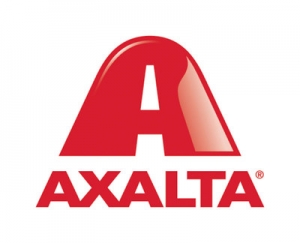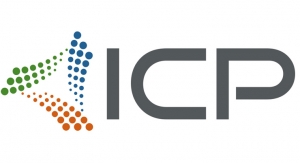Arnold Wang, China Correspondent05.09.16
Based on a report released by China National Coatings Industry Association, China’s total coatings output was 17.2 million tons in 2015, increased by 4.2 percent over 2014.
The association estimated that China’s total coatings output in 2016 will be 18 million tons, which will only be a 5 percent increase over 2015. Apparently relatively slow, which is less than two figures, but stable growth will be the new phenomenon for China’s coating industry in the near future. The thirteenth five years plan for the China coatings industry mention that environmental friendly coatings varieties will consist of 57 percent of total coatings output in China by 2020. With the government pushing China’s whole economy towards environmentally friendly, coatings varieties with low VOC or no VOC will outpace the whole coatings industry’s development in China.
Domestic demand will provide new growth opportunities
The trend of China’s real estate market still has a major impact to the coatings industry.
In February, 2016, the value of China’s total export is 821.8 billion yuan, decreased by 20.4 percent over the same month of last year. With external demand continuously decreasing, domestic demand in China becomes more and more important in support of the continuous growth of the Chinese economy. And the Chinese real estate industry is still one of the pillar industries, which has significant implications to many related industries, including coatings and adhesives. In the first two months of this year, China sold a total of 112.4 million square meters of houses and apartments, increased by 28.2 percent compared with the same period of last year. Among this number, the total area of residential houses and apartments grew by 30.4 percent, and the total area for office building grew by 11 percent. The recovery of the real estate industry seems to be on track in the first quarter of 2016.
If the trend is consistent for the entire year for 2016, this could transform into another growth opportunity for the coatings industry, especially for the architecture coatings market sector, in China. But the fluctuation of the real estate market is foreseeable too, and the final impact to coatings market is not clearly visible at the moment. The latest regulation policy in China’s real estate industry is to restrict house and apartment purchase in tier one cities, such as Beijing, Shenzhen and Shanghai, but the governments in tier 3 and tier 4 cities, on the contrary, are loosening their real estate policies in order to encourage real estate transaction.
Although the Chinese coatings producers are paying more and more attention on repainting market, namely refurbishing or redecoration projects, it is unlikely that this new growing segment will replace the new house and apartment market for architecture coatings anytime soon, but developing brand awareness in a new market segment normally takes years of marketing efforts, so the companies who move early towards this direction could take advantage of their position when the market scales up in the future.
Wood coatings market will be a hot battle field
Unlike some other coatings segments, the wood coatings market is still very fragmented in China. No single brand has a dominant position in wood coatings market like Nippon Paint in architecture coatings, or AkzoNobel in powder coatings. Instead, the Chinese wood coatings market is represented by private domestic companies. This phenomenon of the wood coatings market is closely linked with the market fragmentation of the Chinese wood furniture market. Close customer relationships with wood furniture customers, who are mainly domestic companies too, enabled domestic wood coatings manufawcturers to compete with or even defeat foreign brands in the past. However, the new market demand for high quality waterborne wood coatings has created a new hot battlefield in the last two years, which could reshuffle the current ranking of the wood coatings players. The new trend provides a new opportunity for the wood coatings companies who can meet the customers demand both for high quality, such as coatings hardness, and environmental demand, such as low VOC or no VOC. Foreign brands with technical advantages could take advantage of this new trend, but to win the market competition, they still need to find new approaches to establish a close customer relationship with their end users.
Automotive industry will maintain stable growth, providing consistent growth opportunities for foreign brands
The other industry which is crucial to the development of the coatings market is the automobile industry. Inside a car powder coatings and solvent-based coatings are widely used on dashboards, panels and door handles and as well as other plastic and metal parts. But waterborne coatings are quickly catching up and beginning to take more market share from solvent-based varieties. OEM and refinish paint is closely linked with the growth of the automobile industry, which provides consistent growth opportunities for large foreign brands such as PPG, Akzo Nobel and Nippon Paint as well as BASF. Based on the report released by China Association of Automobile Manufacturers, in 2015 China sold a total of 24.6 million vehicles, increased by 4.7 over 2014. In this number, 21 million are passenger vehicles, the first time in history for this sector to surpass a new milestone: 20 million. Compared with 2014, passenger vehicles grew by 7.3 percent over 2014. And even faster was the growth of new energy automobile sector, which sold a total of 331 thousand vehicles in 2015, an increase of 340 percent over 2014. The association said the rebate on consumption tax for the car with a displacement of equal or below 1.6 liters has a significant contribution to the growth of the passenger car market sector.
Competition will upgrade the whole industry
With the launch of both more environmental friendly coatings products and more customized, and even personalized services, the whole coatings industry in China will go through an internal transition. New financing models, new technologies and new services will increase the intensity of market competition in the coatings market. But the big picture is that the whole coatings industry in China will be upgraded towards higher quality and “greener,” which, for the whole society, is good to see happen. CW
The association estimated that China’s total coatings output in 2016 will be 18 million tons, which will only be a 5 percent increase over 2015. Apparently relatively slow, which is less than two figures, but stable growth will be the new phenomenon for China’s coating industry in the near future. The thirteenth five years plan for the China coatings industry mention that environmental friendly coatings varieties will consist of 57 percent of total coatings output in China by 2020. With the government pushing China’s whole economy towards environmentally friendly, coatings varieties with low VOC or no VOC will outpace the whole coatings industry’s development in China.
Domestic demand will provide new growth opportunities
The trend of China’s real estate market still has a major impact to the coatings industry.
In February, 2016, the value of China’s total export is 821.8 billion yuan, decreased by 20.4 percent over the same month of last year. With external demand continuously decreasing, domestic demand in China becomes more and more important in support of the continuous growth of the Chinese economy. And the Chinese real estate industry is still one of the pillar industries, which has significant implications to many related industries, including coatings and adhesives. In the first two months of this year, China sold a total of 112.4 million square meters of houses and apartments, increased by 28.2 percent compared with the same period of last year. Among this number, the total area of residential houses and apartments grew by 30.4 percent, and the total area for office building grew by 11 percent. The recovery of the real estate industry seems to be on track in the first quarter of 2016.
If the trend is consistent for the entire year for 2016, this could transform into another growth opportunity for the coatings industry, especially for the architecture coatings market sector, in China. But the fluctuation of the real estate market is foreseeable too, and the final impact to coatings market is not clearly visible at the moment. The latest regulation policy in China’s real estate industry is to restrict house and apartment purchase in tier one cities, such as Beijing, Shenzhen and Shanghai, but the governments in tier 3 and tier 4 cities, on the contrary, are loosening their real estate policies in order to encourage real estate transaction.
Although the Chinese coatings producers are paying more and more attention on repainting market, namely refurbishing or redecoration projects, it is unlikely that this new growing segment will replace the new house and apartment market for architecture coatings anytime soon, but developing brand awareness in a new market segment normally takes years of marketing efforts, so the companies who move early towards this direction could take advantage of their position when the market scales up in the future.
Wood coatings market will be a hot battle field
Unlike some other coatings segments, the wood coatings market is still very fragmented in China. No single brand has a dominant position in wood coatings market like Nippon Paint in architecture coatings, or AkzoNobel in powder coatings. Instead, the Chinese wood coatings market is represented by private domestic companies. This phenomenon of the wood coatings market is closely linked with the market fragmentation of the Chinese wood furniture market. Close customer relationships with wood furniture customers, who are mainly domestic companies too, enabled domestic wood coatings manufawcturers to compete with or even defeat foreign brands in the past. However, the new market demand for high quality waterborne wood coatings has created a new hot battlefield in the last two years, which could reshuffle the current ranking of the wood coatings players. The new trend provides a new opportunity for the wood coatings companies who can meet the customers demand both for high quality, such as coatings hardness, and environmental demand, such as low VOC or no VOC. Foreign brands with technical advantages could take advantage of this new trend, but to win the market competition, they still need to find new approaches to establish a close customer relationship with their end users.
Automotive industry will maintain stable growth, providing consistent growth opportunities for foreign brands
The other industry which is crucial to the development of the coatings market is the automobile industry. Inside a car powder coatings and solvent-based coatings are widely used on dashboards, panels and door handles and as well as other plastic and metal parts. But waterborne coatings are quickly catching up and beginning to take more market share from solvent-based varieties. OEM and refinish paint is closely linked with the growth of the automobile industry, which provides consistent growth opportunities for large foreign brands such as PPG, Akzo Nobel and Nippon Paint as well as BASF. Based on the report released by China Association of Automobile Manufacturers, in 2015 China sold a total of 24.6 million vehicles, increased by 4.7 over 2014. In this number, 21 million are passenger vehicles, the first time in history for this sector to surpass a new milestone: 20 million. Compared with 2014, passenger vehicles grew by 7.3 percent over 2014. And even faster was the growth of new energy automobile sector, which sold a total of 331 thousand vehicles in 2015, an increase of 340 percent over 2014. The association said the rebate on consumption tax for the car with a displacement of equal or below 1.6 liters has a significant contribution to the growth of the passenger car market sector.
Competition will upgrade the whole industry
With the launch of both more environmental friendly coatings products and more customized, and even personalized services, the whole coatings industry in China will go through an internal transition. New financing models, new technologies and new services will increase the intensity of market competition in the coatings market. But the big picture is that the whole coatings industry in China will be upgraded towards higher quality and “greener,” which, for the whole society, is good to see happen. CW


























